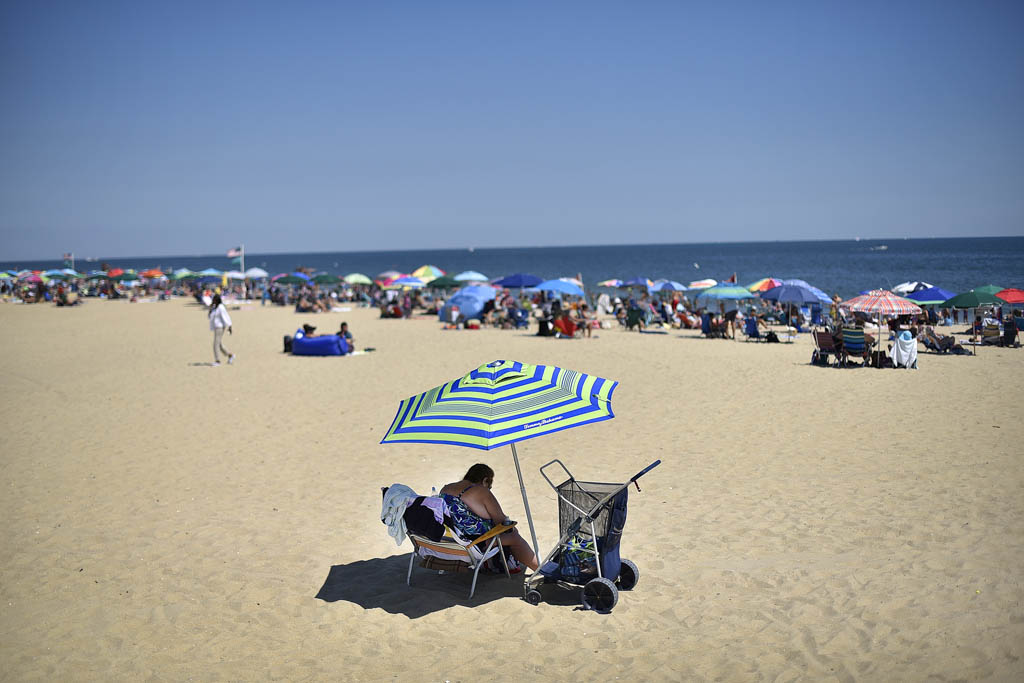By VASHTI HARRIS
Staff Writer
LONG BRANCH —Seeking to inform citizens about the current status of their beaches, the New Jersey Sea Grant Consortium announced that New Jersey’s shores are ready for summer visitors.
During its 15th annual State of the Shore event, Bob Martin, commissioner of the New Jersey Department of Environmental Protection (NJDEP) and Jon Miller, a coastal processes specialist, declared the beaches ready on May 24 at McLoone’s Pier House located at 1 Ocean Ave.
The event is held every year to help explain and analyze ongoing yearly beach related issues such as: beach erosion, storm effects, and water levels, coastal waves heights due to storms and shore changes.
Martin said the NJDEP has two programs to keep the beaches safe and clean.
The first involves monitoring the the water quality of the beaches. The department began on May 15 testing the water of 216 beaches. The department collects water samples every Monday and tests them every Tuesday and every week the department posts its water sample on its website, according to Martin.
The second program involves surveillance. The department monitors the beaches for debris and algal blooms for the entire summer until mid September doing 6 flights per week, according to Martin.
Then Martin spoke about 11 projects that the NJDEP was working on to improve the beaches and protect citizens who live near the shore from flooding. When talking about each project, Martin talked about each projects’ total costs, its purpose, source of funding and completion date.
Some projects have already been completed, others have just started and some are still being worked on. Each project’s cost ranges from $151 to $11 million.
The first project focuses on the Township of Union Beach. The work costs $211 million and started in February. Estimated completion date in November 2022. This project aims to reduce flooding and develop a protective barrier for residents, according to Martin.
The department’s current largest project is a coastal project focusing on the Long Beach Island that cost $151 million and was completed in December of 2016, according to Martin.
Most of the projects were funded by the federal government. On some projects, the department shared the costs and less than 10 percent of the total of the funds came from the state, according to Martin.
Martin said the department also has an public access interactive map on its website to help citizens get to the numerous beaches in the state.
“We are going to have a wonderful summer, the water is safe, the beaches are clean and we want everyone to come out and visit our state’s many beaches,” Martin said.
Miller is a coastal processes specialist, New Jersey Sea Grant Consortium Extension Program research assistant professor and a Stevens Institute of Technology 2017 New Jersey State of the Shore Report, according to information provided by the the New Jersey Sea Grant Consortium.
Miller give an updated report on the two storms that affected the beaches during the past year, storm erosion and future tropical storm weather reports.
The two most notable storms of the winter from a coastal erosion standpoint were a late January Nor’Easter, which caused moderate to major erosion on several New Jersey beaches, and a winter storm in early-mid March, Stella, that caused some additional erosion, according to a reported provided by the New Jersey Sea Grant Consortium.
In terms of wave heights, the largest waves were measured off the northern New Jersey coastline during Stella. This year’s flood levels and water levels were moderate despite the two storms, according to Miller.
To analyze the intensity of storms in terms of their potential to cause beach erosion, the Stevens Institute of Technology has recently developed a Storm Erosion Index, which combines wave height, water level, and storm duration in a physically meaningful way to estimate a storm’s intensity and erosion potential, according to a report provided by the New Jersey Sea Grant Consortium.
It is hoped that the index will become a valuable resource for the state and its coastal communities for raising the awareness of coastal storms, particularly Nor’Easters which often get overlooked. Based on the SEI, the most intense storm of the 2016-2017 season was the January 2017 Nor’Easter, according to the report.
In terms of beach erosion, Miller said that this year the state was lucky because when both storms peaked the water levels subsided quickly.
The latest forecast from Colorado State University’s Tropical Meteorology Project calls for an average Atlantic basin hurricane season with 11 named storms, four hurricanes, and two major hurricanes, according to Miller.
New Jersey is not expected to be directly hit by a hurricane in the coming months but can expect a 42 percent chance of high winds due to the storms, according to Miller.
“Here we are five years later after [Superstorm Sandy] and as Martin showed all the great projects on the slide show, our beaches are in a very good state and they will be moving into this winter season, that’s due to a lot of hard work and a lot of effort from the NJDEP, the local communities, engineers and a lot of local people who work together,” Miler said.
For more information about the New Jersey Sea Grant Consortium State of the Shore report visit www.njseagrant.org.
Contact Vashti Harris at vharrisnewspapermediagroup.com.

